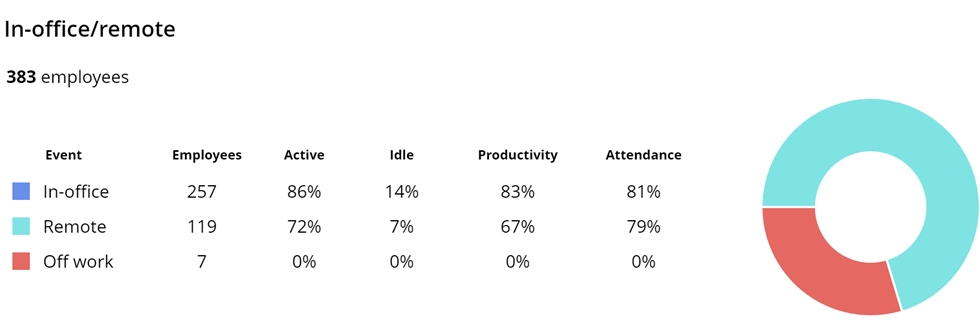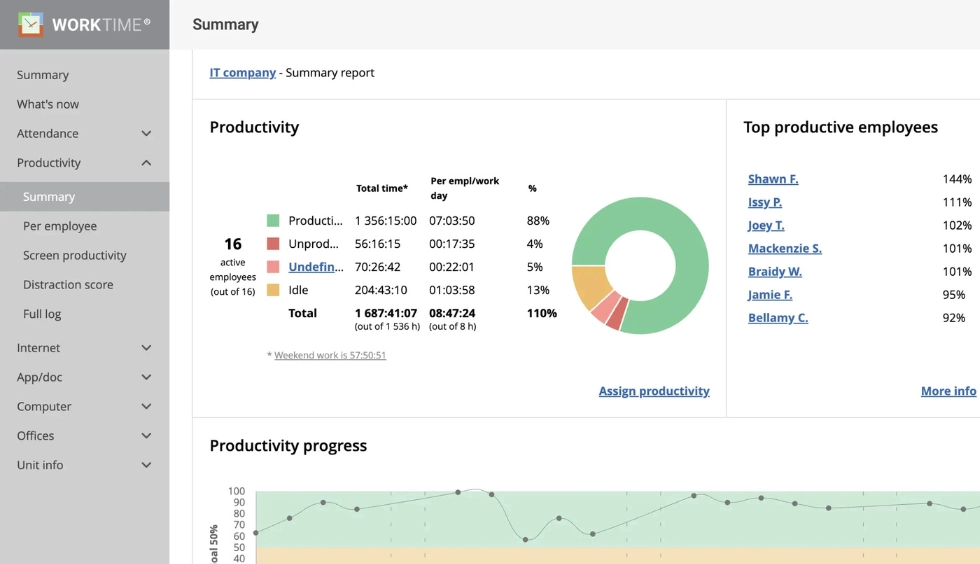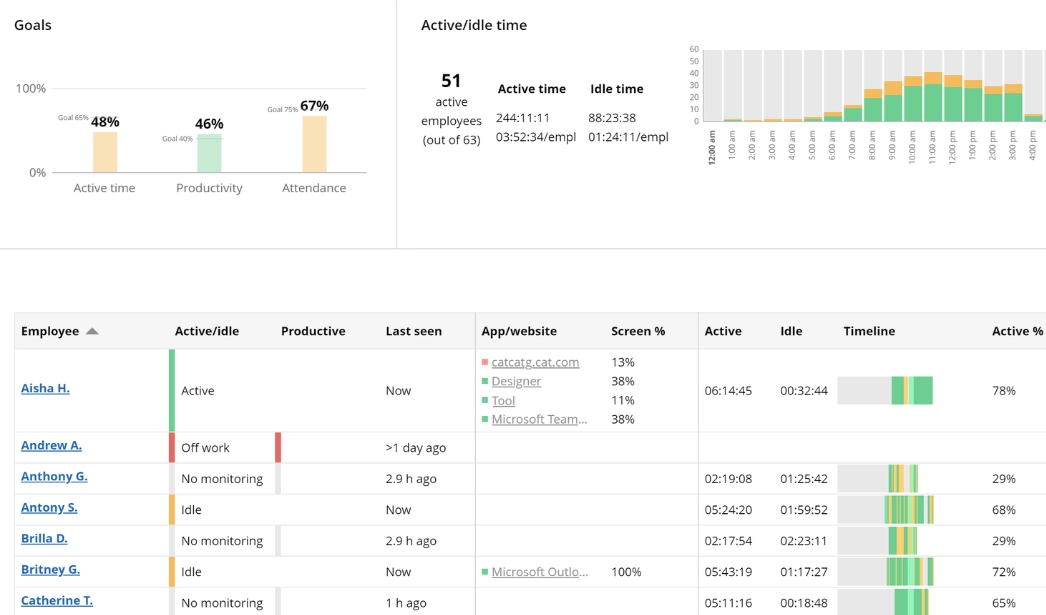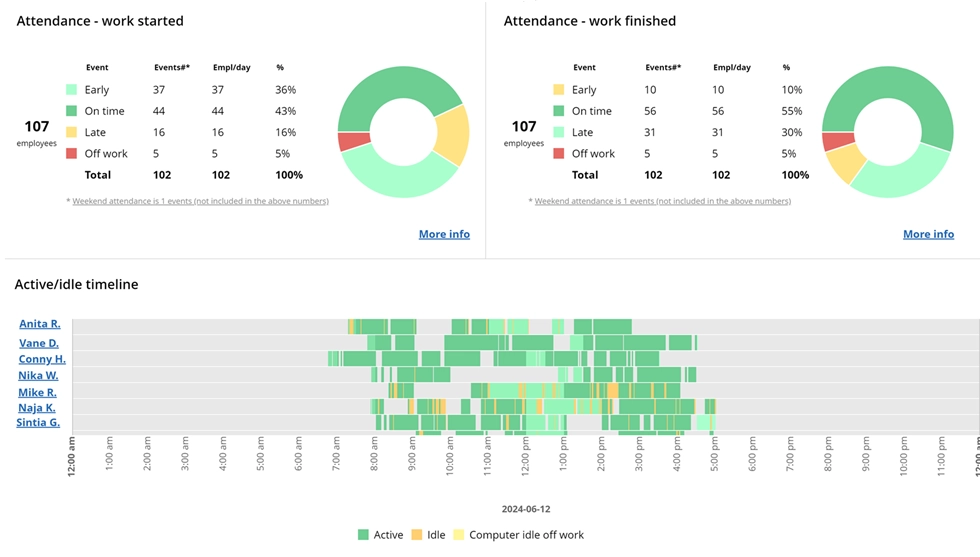Demand for outsourcing - timeline
The BPO (Business Process Outsourcing) market involves companies outsourcing business processes to third-party providers. It includes back-office functions like HR and front-office operations like call center customer service, etc. BPO can be horizontal, covering various industries, or vertical, specializing in specific sectors like finance, healthcare, or IT.For the last decade demand for outsourcing has experienced shifts influenced by economic, technological, and geopolitical factors. However, a prevailing pattern of expansion and heightened refinement emerges as organizations optimize operations and prioritize core competencies.Technology giants such as Apple, Microsoft, and Google have mastered outsourcing. They use it strategically to concentrate on their core competencies while driving digital transformation.
Nonetheless, many companies exhibit reluctance due to the risks associated with selecting an inappropriate approach, which could lead to budgetary overruns, delays, and suboptimal outcomes. These challenges are understood, which is why WorkTime has placed emphasis on tools that help effectively monitor both individual outsourced employees and entire teams.By 2031, the global software outsourcing market is estimated to approach a staggering $1416.3 billion, enticing companies eager to utilize adaptable resource strategies for driving innovation.


WorkTime tracks and compares employee performance across multiple offices. Instead of relying on assumptions, you can easily analyze attendance, active time, and productivity by location.
Start free trialIn this article, we will also explore what is currently happening in the outsourcing market and how companies should respond in times of challenges and changes to optimize their resources and achieve the best outcomes when working with outsourcing partners.World banks are increasingly using third-party providers to support their operations
We can put in light at least some of the guarantee efficient types of outsourcing enable companies to focus on their core functions, reducing costs on non-core or non-essential processes.We are WorkTime - employee monitoring experts, offering effective monitoring solutions for outsourced teams.
- Outsourcing of IT teams. Transfer of information technology and computer support services to external providers. This may include software development, technical support, network maintenance, and more.
- Process outsourcing. Remote execution of specific business processes by a service provider company. For example, data processing, accounting operations, customer support, IT.
- Business process outsourcing or BPO. Delegation of the management of entire business processes to external specialized firms. This may include HR processes, financial management, logistics, etc.
- HR teams outsourcing. Hiring personnel through an external company or agency. This allows companies to avoid costs associated with recruiting, training, and personnel management.
- Marketing and advertising outsourcing. Delegation of advertising and marketing services to external agencies. This may include advertising campaigns, content marketing, SEO, analytics, etc.
- Logistics outsourcing. Planning and executing deliveries, inventory management, coordinating transportation routes, inventorying, and other logistical operations.
Attractive price tag and not only
Outsourcing allows companies to access talented professionals and teams from around the world, which can be crucial for specific tasks or projects. External providers can quickly adapt to changing business needs, offering the ability to scale work volumes up or down based on company requirements.Outsourcing can free up internal company resources, enabling them to focus on strategic tasks and core functions, leading to increased productivity. WorkTime helps to measure and increase employee productivity no matter which type of outsource your company is using.Among organizations that utilize BPOs for application hosting, 65% intend to boost their investment in outsourcing.

With outsource you can cover different time zone, offer local support. Well, it all looks good but there are challenges that might ruin all the ideas of outsourcing.Many small businesses don't have their own team for tech development. Instead, they hire freelancers or external firms to take care of their technology needs. - Forbes
Here come challenges
A better price tag often comes with its own set of costs. Here are some more common ones. And we have a solution for each.Wrong outsourcing setup
Picking the wrong outsourcing setup can mess up how projects get done. WorkTime solution: Regularly check how well workers are doing their tasks to find any problems and fix them. You can implement сonvenient monitoring tools and stay in tune with productivity, even when your team is on the other side of the globe. WorkTime solution: K: Keep an eye on the quality of work and communication to make sure it matches what you expect. Safeguard against outsource employees becoming disengaged using WorkTime's comprehensive employee monitoring solution.Differences in language and culture
Differences in language and culture can make it hard to talk and work together. WorkTime solution: Ensure that if you're outsourcing services such as customer support, where the outsourced team interacts with your clients, they receive language training including accent adaptation. When planning work schedules, take into account local festivals and cultural events of the outsourcing company. Use employee engagement tools to understand what makes your outsourcing team most productive and help with communication.Costs being unclear
Failure to clearly define your budget and project scope can lead to unforeseen costs such as additional software, hiring new staff, extended project timelines, and more. WorkTime solution: E: Engage your outsourcing partner with inquiries about wages, necessary skills, resource expenses, and more. This approach enables you to select a suitable pricing model, preventing any unforeseen costs. Additionally, communicate your budget constraints to select an outsourcing team willing to operate within those parameters. You can also implement monitoring tools that can help optimize costs and the time spent by outsourced workers.Losing control
Losing control can happen when you don't know what your workers are doing. WorkTime solution: W: When you're unable to control the work process in outsourcing, it becomes manageable with employee monitoring tools. Utilize user-friendly solutions like WorkTime to stay updated on your outsourcing work processes at all times.Not enough skilled teams
Not enough skilled teams for the outsourced tasks can slow things down. WorkTime solution: W: Watch out for weak spots and give extra help or training. You can easily do this with WorkTime monitoring tools.Worries about security
Worries about security might come up when people have access to secret information. Use checks to spot any dangers and take steps to stay safe. WorkTime solution: T: To minimize the possibility of security threats, use WorkTime. You can also incorporate Data Processing Agreements detailing the storage, processing, and transfer of data. This way, you can outsource critical services without concerns about the unauthorized disclosure of sensitive information.Is it really worth outsourcing?
So, is it worth risking control over important business processes and outsourcing them? What will you ultimately gain? Let's assign hypothetical weights and weigh the pros and cons of outsourcing. Indeed, outsourcing offers numerous advantages such as cost savings, access to expertise, flexibility, allowing businesses to focus on their core activities, and saving time on tasks that are not central to the business.So, how to be certain that outsourcing processes are effective and that delegating tasks to contracted companies is genuinely beneficial? All it takes is to establish a process of control, monitoring, and communication between the main office and the remote office.But outsourcing can bring about challenges such as loss of control, communication barriers, and quality concerns, among other potential issues.
WorkTime is a tool that provides precise metrics, allowing you to bypass speculation and accurately compare the performance of your local team with your remote team. It also assesses how effectively you manage your remote team by displaying attendance percentage, active time percentage, and productivity percentage.All it takes is to establish a process of control, monitoring, and communication between the main office and the remote office and it’s much easier with WorkTime.
Is your outsource office productive enough? Skip the guess-work, get exact productivity % with WorkTime.
6 strategies for successful outsourcing
1. Plan regular team meetings
Clearly outline project requirements, deliverables, timelines, and quality standards to avoid misunderstandings and ensure accountability. Schedule regular meetings to ensure that everything is progressing according to plan.2. Talk to employees personally
So they get to know you and you get to know them. This is time consuming but this is worth it. Measure individual goals of your employee to see how they improve or what is lacking. Engage and motivate each employee individualy. It's easy with WorkTime tools.

WorkTime provides real-time insights into employee activity - showing who is active, idle, off work, or on vacation; who is productive or not; and which applications and websites are open on their screens.
Book demo3. Set and monitor deadlines and KPIs
So your team knows when the job has to be completed. Avoid overworking and make sure employees' active time is productive. Define key performance indicators (KPIs) to measure the success of the outsourcing arrangement and regularly evaluate performance against these metrics.4. Apply employee monitoring
Let your team know there is monitoring and apply it. Success stories from WT. Check their productivity regularly. Stay connected with remote team progress.5. Continue to improve
Encourage a culture of continuous improvement by seeking feedback, implementing lessons learned, and striving for innovation and efficiency.6. Manage the risk
Identify potential risks associated with outsourcing and develop contingency plans to mitigate these risks effectively. Monitor and predict such risks with WorkTime's completely automated monitoring processes.
Most popular countries for different outsourcing type
Call centers
In recent years, the global outsource call center market has experienced notable growth, driven by various regions.The NA region is poised to lead the market, projected to hold an estimated 35% market share. APAC closely follows with an anticipated market share of 30%, while Europe is expected to account for 25%. The USA and China are forecasted to capture shares of 7% and 3%, respectively.Key players in this expansion include North America (NA), Asia-Pacific (APAC), Europe, the United States (USA), and China.
In terms of market size, the global call center market was valued at around $456 billion in 2020 and is expected to reach approximately $496 billion by 2025, growing at a CAGR of around 1.7%.
IT
The primary segments within the IT outsourcing market, namely web hosting, software development outsourcing, and administration outsourcing, collectively account for 63.5% of the total market value.Moreover, more than 75% of executives have indicated their plans to pursue IT service outsourcing, with the primary areas of focus being IT infrastructure services, application and software development, and cybersecurity.IT services are the most outsourced, making up 37% of all outsourced operations.
The recent report delves into the latest trends in outsourcing within Eastern Europe and its tech talent pool. It assesses the current landscape of IT outsourcing in countries such as Poland, Ukraine, Hungary, Romania, the Czech Republic, Bulgaria, Moldova, and the Baltic region.IT outsourcing is increasingly shifting towards Eastern Europe
Based on data from Emerging Europe, the total tech talent pool of Central and Eastern Europe, including the Balkans and some neighboring countries, surpassed 2.2 million in 2022.
Customer support
The global market has been greatly impacted by offshoring, a practice that entails outsourcing services to countries that are geographically distant. Leading companies have embraced this approach to manage remote teams and oversee outsourced development projects.Governments across Latin America are actively working to attract foreign investment and grow the digital sector. As a result of these efforts, digital exports in countries such as Colombia, Argentina, Brazil, Chile, Mexico, and Uruguay are projected to surpass $140 billion annually by 2030, up from $34 billion in 2022. These initiatives aimed at digital exports position Latin America as a reliable destination for businesses from North America. Considering these factors, outsourcing to Latin America emerges as a practical option for your business.Since the 2020s, more US-based businesses have turned their eyes toward Latin America.
Price tag on outsourcing per country
India
For several years, India has maintained a prominent position in the Business Process Outsourcing (BPO) industry. The BPO sector in India has been steadily expanding, attributed to various factors. India's BPO industry has flourished primarily due to customer preferences. Companies globally choose to outsource non-core operations to India, attracted by its cost advantage. Labor costs in India are notably lower than in other countries. Furthermore, India boasts a highly skilled workforce proficient in English, making it an ideal outsourcing destination for businesses.India's BPO industry has thrived due to its unique attributes. A major driver is the large pool of skilled labor available in the country.Projected for 2024, the average spend per employee within the Business Process Outsourcing market in India is estimated to reach US$13.53. - Statista
Philippines
Philippines - another attractive destination for companies seeking outsourcing teams. To understand, setting up an in-house team in the USA involves various costs, including salaries, benefits, office space, and equipment. Salaries for tech roles typically range from $75,000 to $150,000 or more annually, while operational roles vary from $40,000 to over $100,000. Additional expenses for benefits, office space, and equipment can quickly add up to several hundred thousand dollars annually for a small team.However, the overall pricing and breakdown may differ between outsourcing companies, typically based on a standard computation model.The outsourcing cost in the Philippines varies depending on the job function. For instance, for call center services, the hourly rate for a customer service representative ranges from $5.00 to $12.00.
Popular outsourcing services in the country encompass virtual assistance, graphic design, content creation, website design and development, as well as customer support.In 2022, the Philippines surged forward as the fastest expanding ecommerce market, boasting 1.5 million Filipinos enrolled on global online platforms offering freelance services, contributing to a 24.1% market share and solidifying its position as a leading outsourcing center.
Malaysia
Malaysia's outsourcing industry is on the rise, with a projected compounded annual growth rate (CAGR) of 3.1% from 2019 to 2024. Among the most outsourced services are IT and software development. There are two main factors contributing to Malaysia's attractiveness as an outsourcing destination.Secondly, Malaysia boasts a lower cost of living compared to many cities in America and Europe, providing a financial advantage for companies looking to expand. For instance, as of May 2023, the average monthly income in Malaysia is around US $1,485, significantly lower than in wealthier nations.Firstly, Malaysians demonstrate strong English proficiency, ranking third in Asia according to the 2021 English Proficiency Index.
Eastern Europe
Here is the most popular IT outsourcing. According to Clutch currently there are more than 3000 firms that specialize in software development in this region. 913 firms are based in Ukraine, 1064 in Poland, 112 in Czech Republic, ect. The advantages of outsourcing in Eastern Europe extend beyond the skills and quality of employees to primarily include the favorable market costs. On average software developers rates in Eastern Europe countries like Moldova, Ukraine, Hungary, Romania vary from $25 to $49 per hour. Depending on the country? The level of developer expertise, and the project complicity the cost may be above $99 per hour.Canada
The cost of outsourcing in Canada can vary significantly depending on the specific services you require and the company you work with. Typically, the cost of outsourcing services in Canada may be higher compared to other countries due to the higher cost of living and wages. Exact figures may vary from company to company and from project to project. Geographic location significantly influences outsourcing expenses. For example, outsourcing call centers to India typically incurs costs ranging from 60% to 75% less compared to agencies in Western Europe or US and Canada. Here's an overview of outsourcing costs across various regions:- United States/Canada: $20 – $30 per hour
- Western Europe: $40+ per hour
- Eastern Europe: $12 – $25 per hour
- Australia: $35 – $55 per hour
- Africa/Middle East: $15 – $20 per hour
- Latin America: $8 – $18 per hour
- Asia/Philippines: $8 – $14 per hour
- India: $6 – $10 per hour
Employee monitoring for success
Outsourcing, with transparent pricing and a focus on employee well-being, can be a lucrative approach for both employers and outsourced staff. By establishing clear rules and maximizing the benefits of outsourcing, it can lead to a win-win situation. While outsourcing may present challenges, learning from others' experiences and considering your unique situation and market dynamics can help overcome obstacles and plan effectively.Monitoring allows managers to track the performance of outsourced team members, ensuring they meet deadlines and deliver high-quality work. By monitoring employee activity, managers can ensure that outsourced team members are focused on the tasks assigned to them and are making progress accordingly. Monitoring helps managers oversee communication between in-house staff and outsourced team members, ensuring effective collaboration and alignment. And much more, so start your 14 days free trial now.Employee monitoring is instrumental in managing outsourced teams effectively, and WorkTime has been successful in this regard for many years, offering a solution that is both effective and non-invasive.









